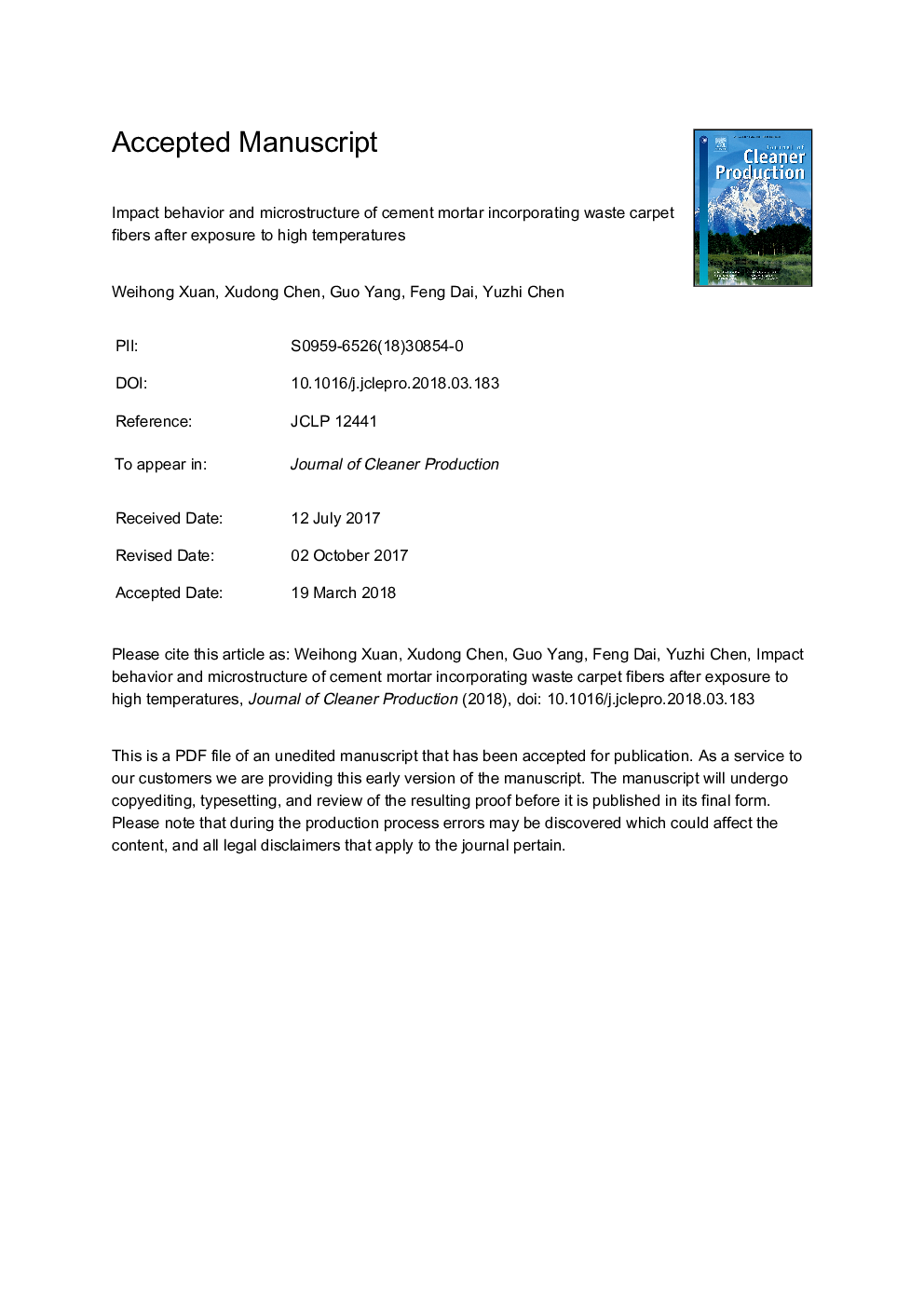| Article ID | Journal | Published Year | Pages | File Type |
|---|---|---|---|---|
| 8095810 | Journal of Cleaner Production | 2018 | 30 Pages |
Abstract
Adding waste carpet fibers to cement mortar as a cleaner production can improve the property of mortar. This study investigated the influence of different parts of industrial carpet waste on impact behavior and microstructure of mortar at elevated temperatures. Mortar containing normal polypropylene fibers, face fibers, backing fibers and hybrid fibers (face fibers and backing fibers) respectively as well as ordinary mortar were prepared and exposed to 20, 300 and 500â¯Â°C. The dynamic splitting tensile strength of these specimens was then measured at air pressures of 0.15, 0.2 and 0.25â¯MPa. In order to obtain the pore distribution and microstructure image, mercury intrusion porosimetry (MIP) and scanning electronic microscopy (SEM) were used. Finally, the fractal analysis was employed to further evaluate the impact of waste carpet fibers on microstructure of mortar. Results of this paper indicated that the incorporation of carpet face fibers is more feasible to improve impact behavior of mortar at elevated temperatures compared with adding ordinary polypropylene fibers. Moreover, the higher impact air pressure, or the higher temperatures, the more significantly reinforcing effects of face fibers is. Backing fibers and hybrid fibers have a negative role on the impact resistance whether heating or not. Pore distribution and microstructure of mortar incorporating face carpet fibers are better than other mortar, which is in agreement with the change of residual strength. Therefore, the addition of carpet face fibers to mortar does not only reduce environment pollution but also enhance the impact behavior of mortar after exposure to high temperatures.
Related Topics
Physical Sciences and Engineering
Energy
Renewable Energy, Sustainability and the Environment
Authors
Weihong Xuan, Xudong Chen, Guo Yang, Feng Dai, Yuzhi Chen,
